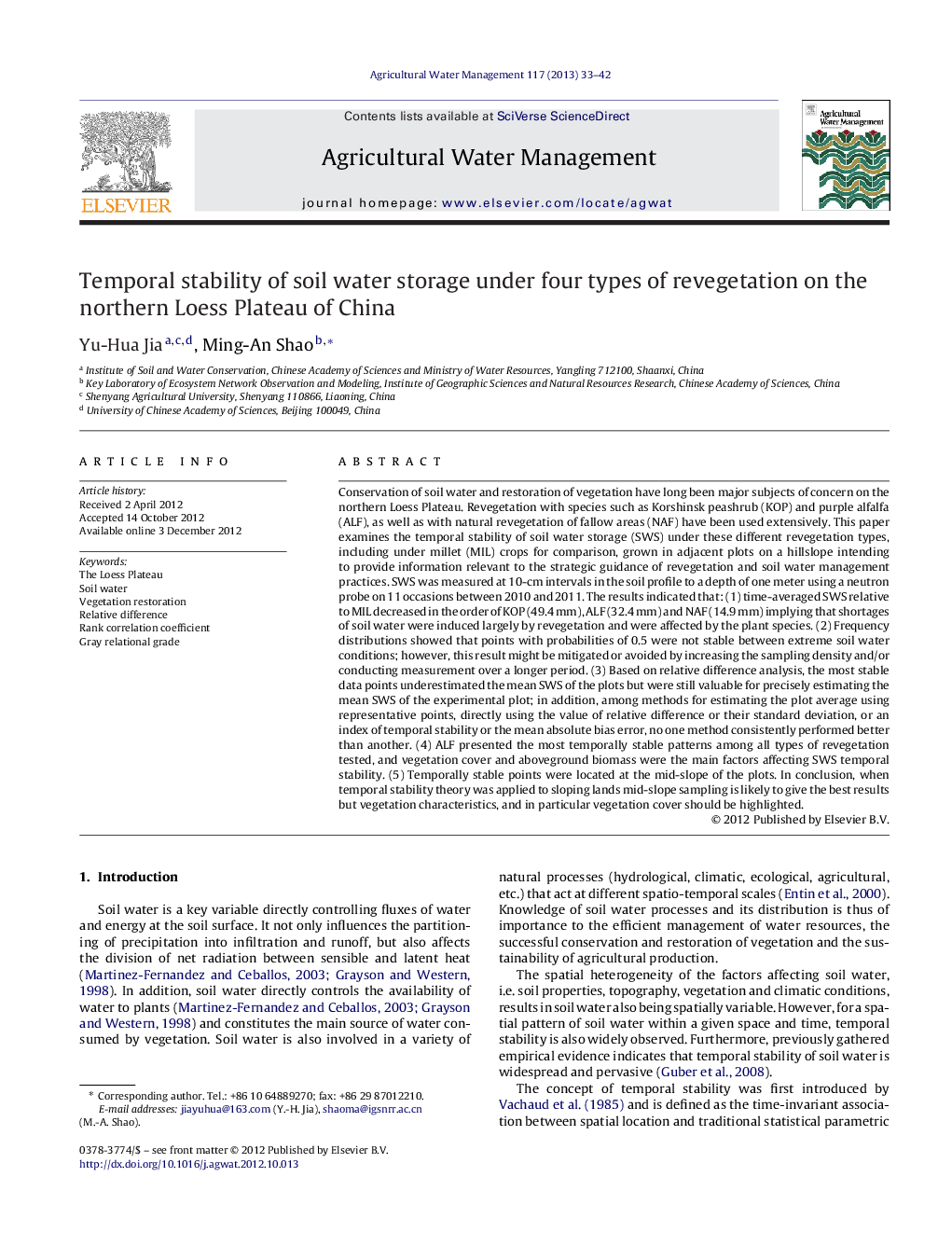| کد مقاله | کد نشریه | سال انتشار | مقاله انگلیسی | نسخه تمام متن |
|---|---|---|---|---|
| 4479030 | 1622962 | 2013 | 10 صفحه PDF | دانلود رایگان |

Conservation of soil water and restoration of vegetation have long been major subjects of concern on the northern Loess Plateau. Revegetation with species such as Korshinsk peashrub (KOP) and purple alfalfa (ALF), as well as with natural revegetation of fallow areas (NAF) have been used extensively. This paper examines the temporal stability of soil water storage (SWS) under these different revegetation types, including under millet (MIL) crops for comparison, grown in adjacent plots on a hillslope intending to provide information relevant to the strategic guidance of revegetation and soil water management practices. SWS was measured at 10-cm intervals in the soil profile to a depth of one meter using a neutron probe on 11 occasions between 2010 and 2011. The results indicated that: (1) time-averaged SWS relative to MIL decreased in the order of KOP (49.4 mm), ALF (32.4 mm) and NAF (14.9 mm) implying that shortages of soil water were induced largely by revegetation and were affected by the plant species. (2) Frequency distributions showed that points with probabilities of 0.5 were not stable between extreme soil water conditions; however, this result might be mitigated or avoided by increasing the sampling density and/or conducting measurement over a longer period. (3) Based on relative difference analysis, the most stable data points underestimated the mean SWS of the plots but were still valuable for precisely estimating the mean SWS of the experimental plot; in addition, among methods for estimating the plot average using representative points, directly using the value of relative difference or their standard deviation, or an index of temporal stability or the mean absolute bias error, no one method consistently performed better than another. (4) ALF presented the most temporally stable patterns among all types of revegetation tested, and vegetation cover and aboveground biomass were the main factors affecting SWS temporal stability. (5) Temporally stable points were located at the mid-slope of the plots. In conclusion, when temporal stability theory was applied to sloping lands mid-slope sampling is likely to give the best results but vegetation characteristics, and in particular vegetation cover should be highlighted.
► Soil water storage (SWS) temporal stability under 4 vegetation types was determined.
► Representative sampling points identified by 4 methods tended to be on the mid-slope.
► The most stable sample points given by relative difference method gave best plot mean SWS.
► SWS spatial pattern was most temporally stable under purple alfalfa.
► Temporal stability was mainly affected by vegetative cover and aboveground biomass.
Journal: Agricultural Water Management - Volume 117, 31 January 2013, Pages 33–42